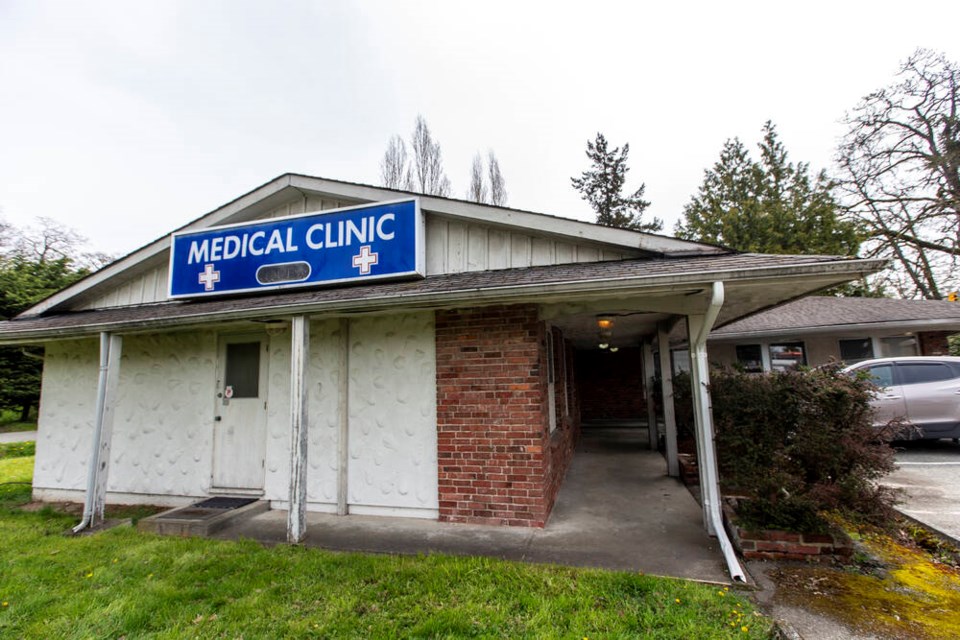Retiring physician Dr. Peter Vizsolyi says monetary incentives for physicians to care for complex care patients are making it harder for him to find care for the rest.
Vizsolyi, who closed his Cook and Quadra Medical Clinic in Saanich in June after the building was sold, had about 1,200 patients, 800 of whom he saw in the past year. He has been able to find new doctors for just 270 of them — 120 complex care patients and 150 who have single diagnosis that would come with an extra incentive fee.
“[The new doctors] will say ‘I will consider taking your chronic complex care patients’ or ‘I will consider taking your diabetics’ or ‘I will consider taking your hypertensives,’ ” said Vizsolyi, 66.
“But they’re not going to take your healthy patient who comes in once a year or who has coronary artery disease who also needs followup.”
Vizsolyi said the problem is not the physicians — to whom he’s grateful for taking some of his patients — “it’s the system.”
Physicians in family practice paying up to $100,000 in overhead need to find ways to pay for that, said Vizsolyi.
A doctor sees an annual incentive of about $315 a year for a chronic complex care patient — someone with two or more diseases such as chronic neurodegenerative disorder and heart failure. For a single diagnosis such as chronic diabetes care, it is $125; for hypertension chronic care, $50.
The incentives were originally put in place to account for the added time physicians need to spend with chronic complex care patients. Over time, they have had unintended consequences, Vizsolyi said, as there’s no monetary incentive for physicians to take on patients who fall outside the Health Ministry established definitions
“I have a 30-year-old patient who has had a lymphoma who’s in complete remission, she needs to be seen once a year for follow up,” he said.
“I have breast cancer patients who need to be seen for breast exam every six months. These people don’t fit these categories, but they have high needs, right? And then there are people who are relatively healthy who should have preventive care.”
Camille Currie, who founded the B.C. Health Care Matters advocacy group, said because being considered “complex care” requires patients to have two of a limited number of conditions, “many individuals are in fact living with complex needs but do not fit under the government’s definition.”
People with just one of the following conditions, for example — history of heart attack, a heart rhythm condition, a pacemaker, history of stroke, a neuromuscular disease or diabetes — all are left at risk of a family doctor not wanting to take them on because they won’t be compensated for the longer appointments they are likely to require, Currie said.
Compensating doctors for their time “is the only way to create an equitable system,” she said.
MLA David Eby, considered the front runner to replace John Horgan as the B.C. NDP leader and premier, told the Times 91įŁ┤┤ Friday that he would boost incentives to encourage physicians to practise in the community as family doctors rather than in hospitals or walk-in clinics.
The province actually has about 6,800 trained family doctors, but only about 3,500 practise in that role, according to Family Doctors for Better Patient Care in B.C.
“One of the challenges I see based on feedback from family doctors is that the incentives for them are not aligned with the behaviours and ways of working that we hoped for,” Eby said.
“And so for example, the incentives are very much to favour family doctors to go in and work in hospitals or to work at drop-in clinics or to work with online service providers — or basically do anything except build relationships with patients over a long period of time, and that’s what we want family doctors to do,” he said. “So we need to get those incentives in mind, where we’re encouraging doctors to take on that kind of work.”
The answers are going to come from the doctors themselves and the best practices of other jurisdictions, Eby said. For some, that will be working on contract, while for others it will be fee-for-service, he said.
“It’s not going to be a one-size-fits-all kind of solution.”
Vizsolyi had planned to retire with the sale of the Cook Street building, but he was unable to find a replacement. Instead, he has moved temporarily to the Burnside Medical Clinic to continue to search for his replacement — or at the very least give his patients’ records a new home.
Doctors of B.C. and the province are negotiating alternative payment models to attract more physicians to work as family doctors as well as modified fee-for-service codes for physicians — the amount doctors are compensated per patient visit, starting with a base of about $32 per visit.
Eby said he expects the government and doctors to reach some resolution before a new leader is announced in December.
Vizsolyi wants the province to consider scrapping the incentives and “have a simple system that pays you for the time you see a patient and supports your overhead … so all patients are treated equally.”
Any more “newfangled ideas” with extra or modified fee codes will only cause more bureaucracy and complication and disincentives for new doctors, he said, ultimately driving even more doctors to walk-in clinics and urgent and primary care centres.
The Cook Street Village Medical Clinic is one of about five family practices and walk-in clinics to close in the capital region this year. Another five have been saved by short-term provincial funding.
Almost one million British Columbians don’t have a family doctor, including 100,000 in the south Island.



